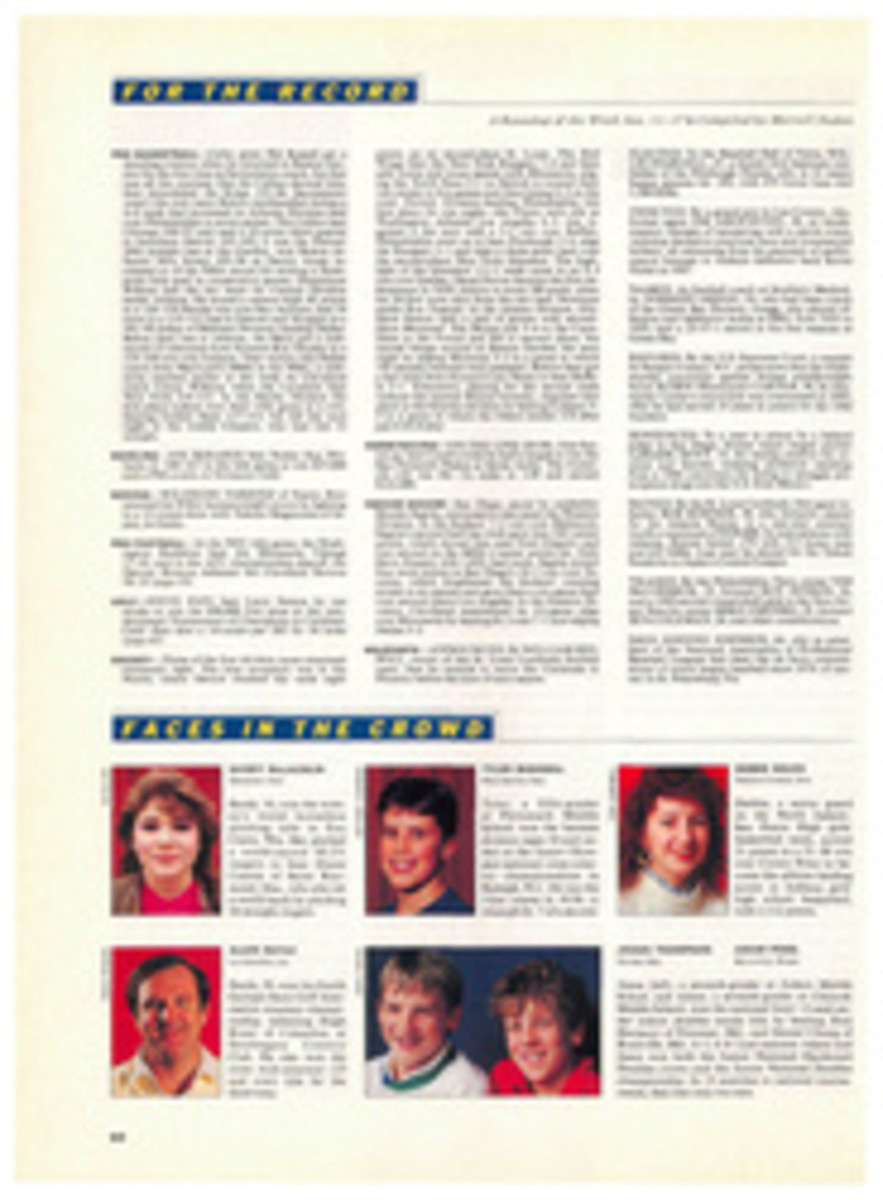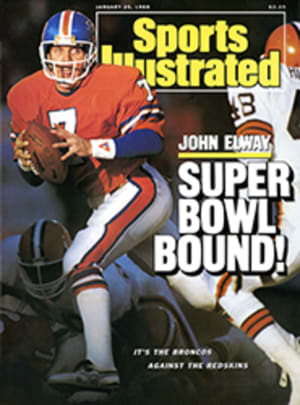
SOMETIMES YOU JUST CAN'T LUGE
At the U.S. Olympic luge trials in Lake Placid, N.Y., last week, people were talking crazy. They said the U.S. could win a medal in Calgary. In luge. They really said that. They said Bonny Warner could win a medal. They said Duncan Kennedy could win one. They said Miroslav Zajonc and Tim Nardiello might win a medal in the doubles.
Then, suddenly, silence.
During a singles training run, Zajonc lost control of his sled coming out of Turn 12 and flew high on the track, smashing into the restraining boards. "I was the first one to get to him," says Nardiello. "I pulled off his bootie. His heel was shattered. I knew we were done." Zajonc, a 27-year-old Czechoslovakian defector, was rushed to Lake Placid Memorial Hospital and his right leg put in a cast from toes to knee.
During competition last Tuesday, Kennedy, one of four national team members who live in Lake Placid, caught his right hand on something—perhaps a jagged piece of ice or a nail. At the hospital he got 12 stitches to repair a torn extensor tendon and a dozen to close the wound. Kennedy, too, received a cast and was out of the trials.
Although the U.S. men's medal prospects have been injured, the luge team is hoping that medical miracles can lead to miracles on the track.
Meanwhile, back at the luge run....
Tearing of hair, gnashing of teeth? Not at all. Things remained oddly placid in Placid. Credit the Terwillegarian Theorem: If at first you don't succeed, don't go home—a 1986 change in the guidelines may get you a place on the team. The theorem is named for Erica Terwillegar, who in 1983 was the top U.S. slider; she won the North American championship and finished fifth at the worlds. In 1984 she had a rotten week during the Olympic trials and missed making the team. Everyone said it was darned hard cheese, but what could you do?
Two years ago the U.S. Luge Association came up with an answer. "We needed discretionary picks," says Mary Ellen Fletcher, the national team's manager. "The USOC [U.S. Olympic Committee] doesn't like discretion, because it can lead to favoritism. But we have a unique situation here."
Lake Placid has the only luge run in the U.S., and the USLA felt it couldn't ask an Olympic prospect to invest four long years in training in the Adirondack village and then not make the team because he or she suffered a Terwillegarian week. The USOC compromised: The two fastest men and women would make the singles team, and USLA officials could pick an additional man and woman; the fastest men's doubles team would go to the Games, and a second team could be selected.
By midweek of the '88 trials the men's discretionary singles spot belonged to Kennedy. Although he'll wear his cast until the end of January, "I'll be back on a sled before the Games," he says.
The discretionary doubles spot is being reserved for Zajonc-Nardiello. (The USLA won't make a final decision until it knows if Zajonc will be physically able to slide in Calgary.) "At the hospital Miro's spirits were up, and he said, "Maybe we can do it,' " Nardiello said. "I think we'll be there."
Warner, 25, of Mount Baldy, Calif., came through the trials in good health. She finished first among the women and on Tuesday broke Terwillegar's U.S. women's record with a run of 38.243 seconds on the 740.5-meter course. On Saturday she lowered the record by .163.
Warner is the survivor of a scary crash and a 15th-place finish at the '84 Sarajevo Games. She has improved steadily and finished fifth at the '87 worlds. "I'm looking at Calgary differently than Sarajevo," she says. "Even going into Sarajevo, I was looking at Calgary. I'm still looking at Calgary. No more of the winsome, luge-some attitude."
For the U.S. women to win a medal, one of them will have to break through East Germany's iron curtain, which finished 1-2-3 at Sarajevo.
Frank Masley of Newark, Del., finished first among the men at Lake Placid and qualified for his third Olympics. Masley, 27, was the flag bearer for the 1984 U.S. Olympic team. "That's still the highlight of my career," says Masley, who in 12 years has won six U.S. singles titles and three doubles titles and will retire from the sport this year.
At the start of a potentially brilliant career is Cammy Myler, 18, who finished second to Warner last week. Myler deferred starting her freshman year at Dartmouth for 12 months to stay home in Lake Placid and concentrate on making the Olympic team. "We're for real," says Myler. "We have the coaching, and now we have the sleds, too."
The coach and the sleds arrived simultaneously. Guiding the team is Wolfgang Schaedler, 29, of Liechtenstein, a perennial among the top 10 sliders in the world, who retired after Sarajevo. Two years ago he was approached by several U.S. lugers and agreed to become their guru. "His first season traveling with us was last year," says Warner, "and, miracle of miracles, we made the big jump."
The U.S. had 23 top 10 placings in World Cup events last season. Zajonc-Nardiello became the first U.S. doubles team to win a World Cup medal, and finished fourth in the '87 rankings. Myler was the first U.S. woman to win a medal in World Cup luge competition, and Kennedy's ninth-place finish in the '87 worlds was the best ever by a U.S. man.
Schaedler has always made his own sleds, and he made 22 for the national team. Wolfie, as the team calls him, is modest about his artisanship. "Luge is a big head-game," he says. "You believe better in one sled, you go faster. Really, the athletes are doing it themselves."
Doubles specialist Nardiello, who had to do it himself to secure a place on the Olympic team, finished second in the men's singles. Joe Barile of Saddle River, N.J., and Steve Maher of Chicago won the doubles berth for Calgary.
And the third woman going to the Games? Lake Placid's Terwillegar, now 24. She didn't need the Terwillegarian Theorem to make the team. Last week she placed third. "It doesn't relieve the sting of '84," she says. "But, yeah, it feels awfully good to finally be going to the Olympics."
PHOTO
JOHN D. HANLON
Doubles team Barile (on top) and Maher put their best feet forward and slid to Calgary.
PHOTO
JOHN D. HANLON
Warner, who lifted one of Wolfie's sleds to a record, is now the U.S.'s top medal prospect.
PHOTO
JOHN D. HANLON
A crushed heel, the product of a luge crash, may have crushed Zajonc's Olympic hopes.

